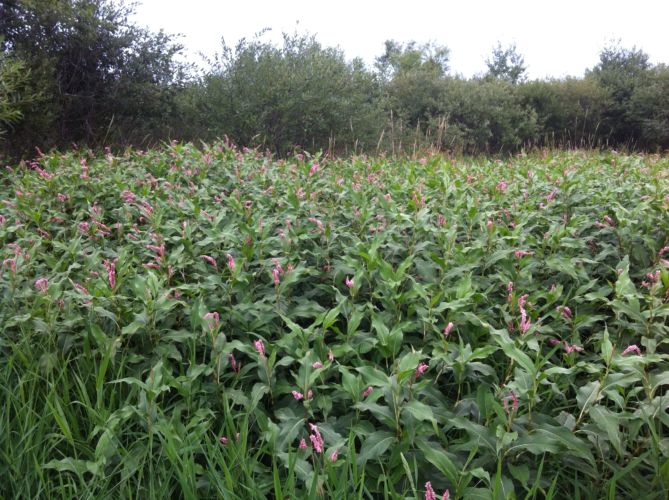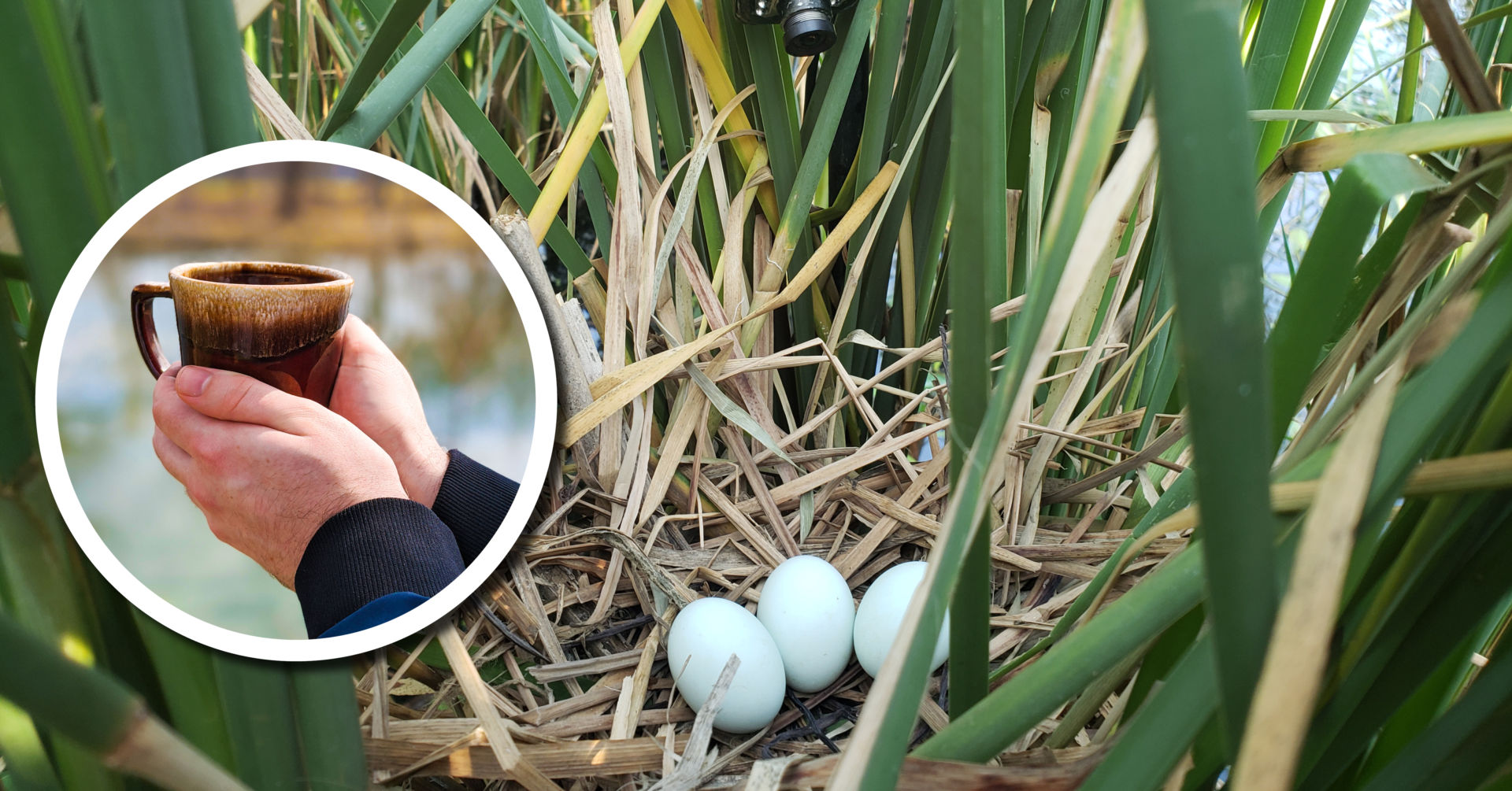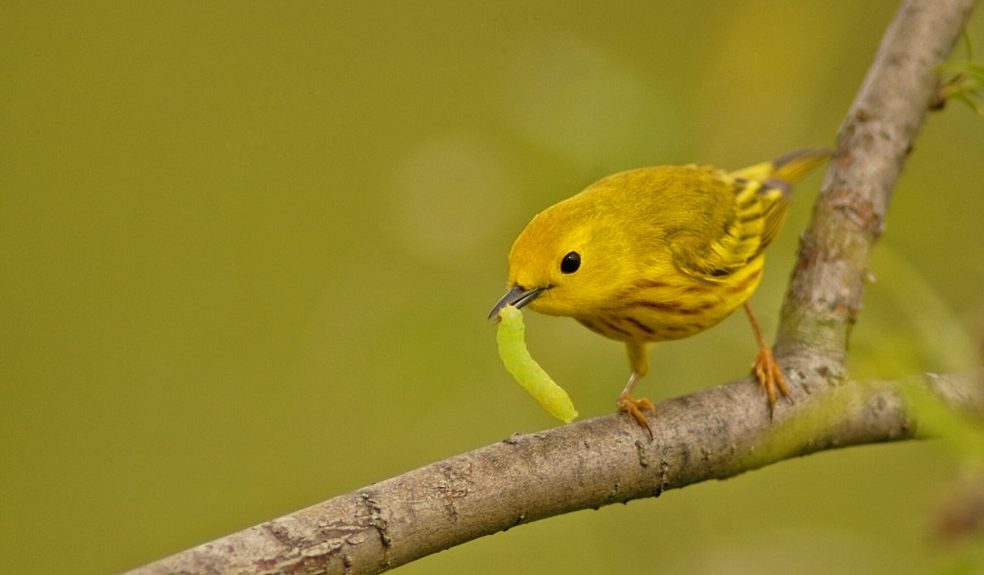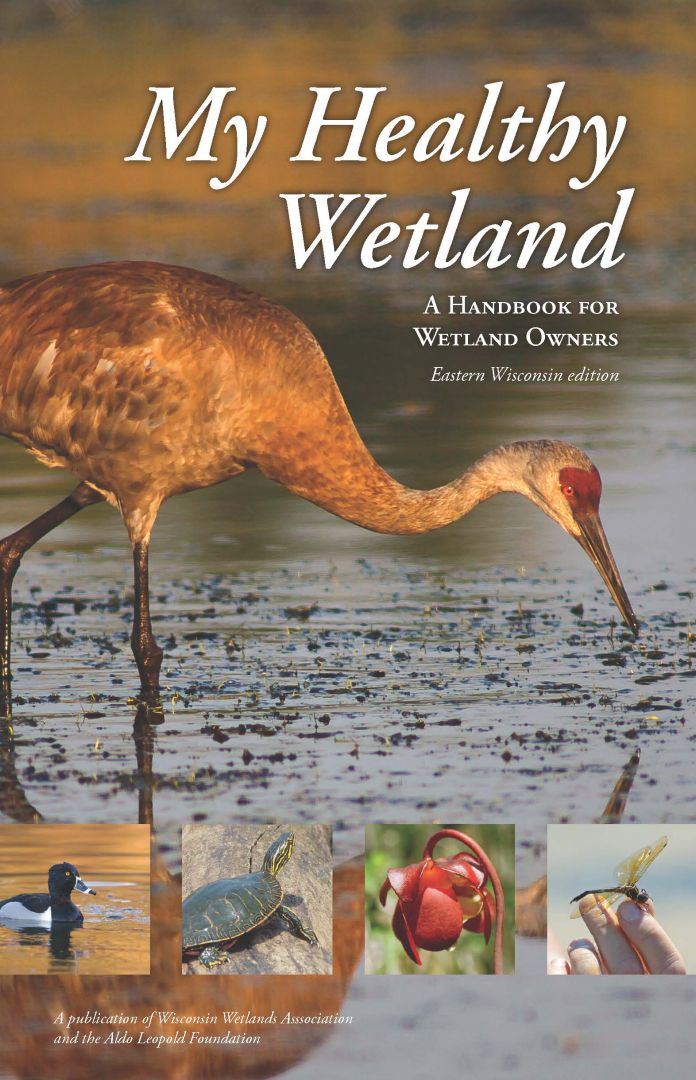Water levels in wetlands: variable from year to year and season to season.
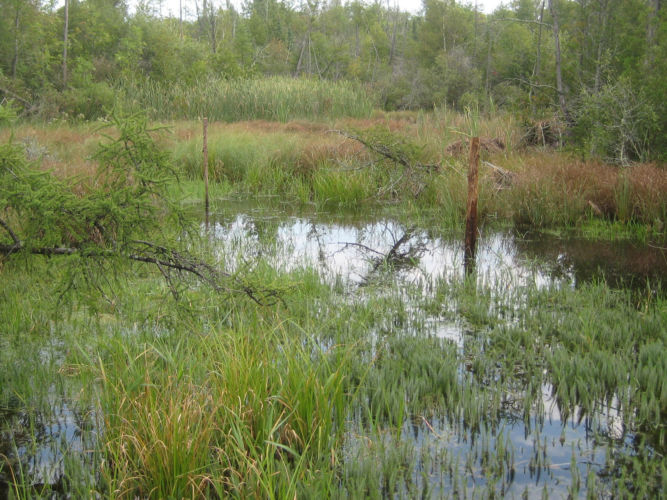
September 2010 in a Door County wetland. Note the two upright wooden posts in the middle of the wetland. You can see standing open water amidst the vegetation.
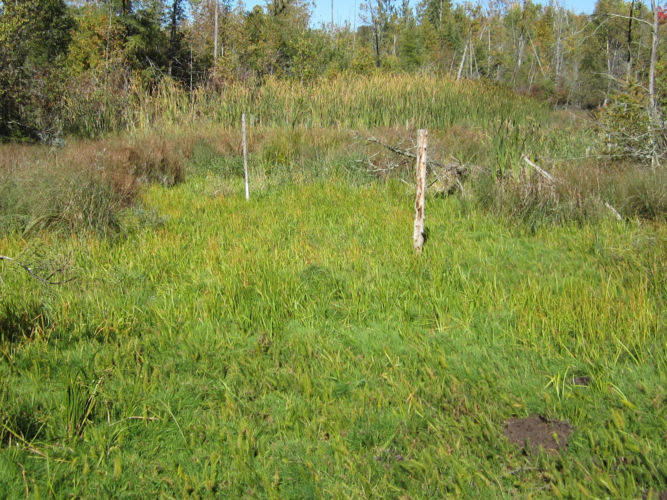
September 2012 in the same Door County wetland. Note the same wooden posts. No visible standing water and lush vegetation growing on the exposed soil.
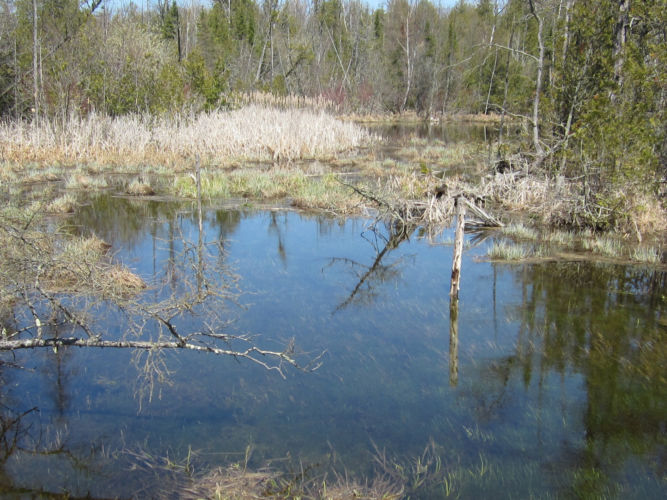
May 2013 in the same Door County wetland. Note the same wooden posts. Plenty of open water following spring rains and snow melt.
Another thing a drawdown accomplishes is the consolidation of the wetland soils. Often in areas with deeper water you’ll find wetland soils, water, and in between a layer of “slurry” (very unconsolidated, watery soil). Many plants have a hard time rooting into this unconsolidated material. When a drawdown occurs, this unconsolidated layer has a chance to consolidate, creating a bed for many plants to root. A diversity of plants makes better habitat for wildlife.
Many wetland managers will do a periodic drawdown of a wetland where they have control over water levels in order to mimic these natural water fluctuations. Just like it’s not good for wetlands to have consistently high water levels every year, it’s also not good to have consistently low water levels either, so usually a drawdown occurs every few years. It’s the variation and fluctuation that is important.
Wetland managers also might do a drawdown in order to be able to accomplish invasive species control. For example, cattail (invasive and hybrid cattail, which unfortunately comprises a majority of what we see in the state now) can overtake a marsh, crowding out other important vegetation. Cattail is very difficult to control in high water situations. It can be pretty easy to manage if water levels can be dropped: a manager can get into the wetland when it is dry to cut the cattail low down and then re-flood the wetland to “drown out” the cut stalks. Ideally, the manager would also burn off the cut vegetation to get rid of that “duff” layer before re-flooding. This technique is very successful at setting back cattail, allowing other vegetation to have a chance. Again, maintaining plant diversity in a wetland makes for better habitat for wildlife.
The timing of a drawdown is also important. It usually occurs in the late summer (as that’s when “normal” low water levels typically occur), but managers may do them at other times of the year depending on their objectives for the drawdown. Doing the drawdown too late in the fall can be problematic for some amphibians who burrow down into mud for the winter. A drawdown can leave these animals “high and dry” (and cold!) during the winter.
Healthy wetlands provide good habitat for wildlife. So whenever we want to know if a particular action (like a drawdown) is good or bad for wildlife, we need to think about if that action will help create or maintain healthier wetlands. Sometimes an action might have a negative impact on wildlife—on individual critters or on a particular species (disturbing a nest, for example), but in the long run, that action might result in better habitat for many species. It’s important to keep that big picture view.
Photos by Tracy Hames, Dan Collins, Nancy Aten, Rob Routledge, Sault College, Bugwood.org , Great Lakes Indian Fish & Wildlife Commission
Wetland Coffee Break: How are water drawdowns affecting nest survival of marsh birds?
Photo points: A great tool for learning about your wetland

